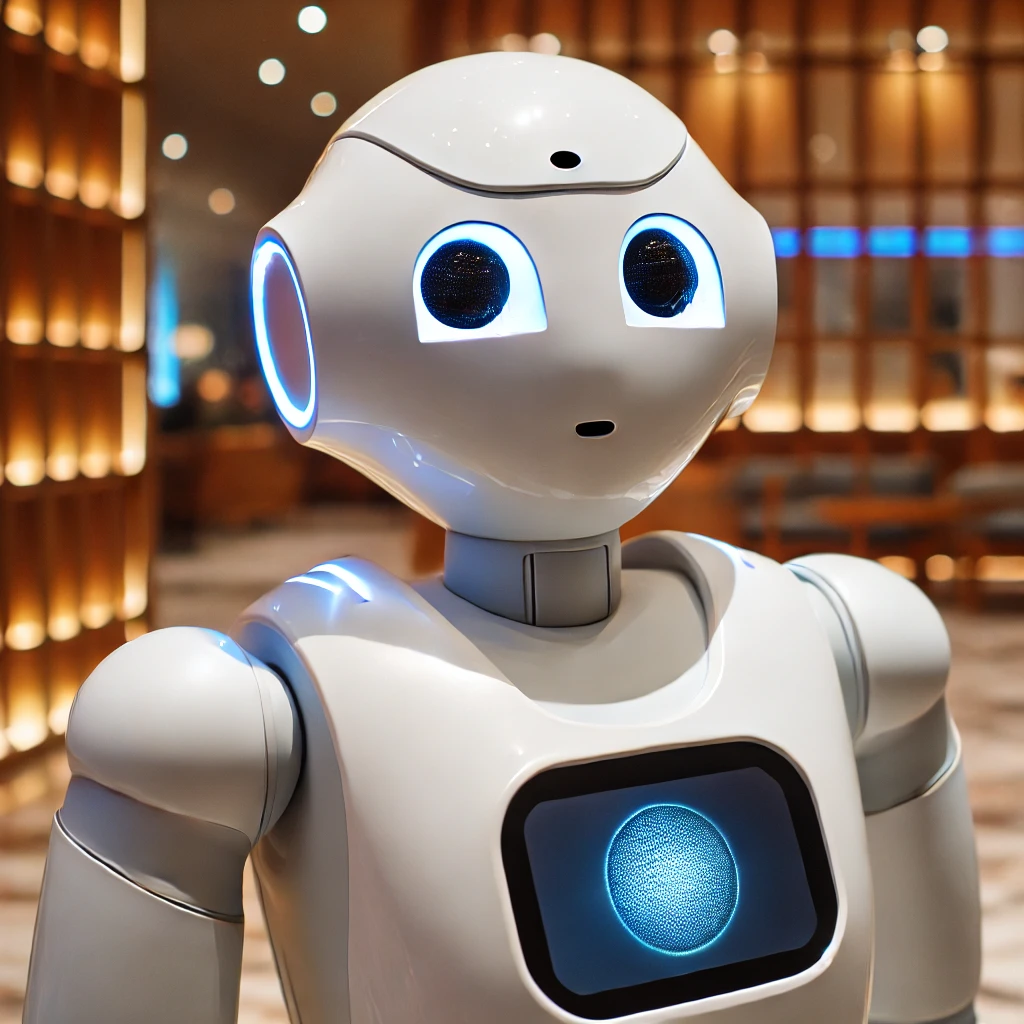The race between Apple and Meta in the development of humanoid robots marks a significant technological shift, signaling an era where artificial intelligence (AI) and robotics converge to redefine domestic life. While humanoid robots have long been associated with commercial applications such as customer service, logistics, and manufacturing, their gradual transition into households is now a focal point for major technology firms.
Meta, known for its aggressive AI and metaverse investments, is directing significant resources toward AI-powered robotics, seeking to build machines capable of seamlessly interacting with humans. Meanwhile, Apple, with its well-established focus on privacy, usability, and seamless hardware-software integration, may approach humanoid robotics with an emphasis on consumer trust and security.
This competition has far-reaching implications for the future of smart homes, human-robot interaction, and artificial intelligence. As Apple and Meta push the boundaries of innovation, their contributions may help overcome existing challenges, making humanoid robots an integral part of daily life.
A Long-Term Vision for Domestic Robots
The idea of humanoid robots in homes is not new, but widespread adoption has been hindered by multiple challenges, including high costs, privacy concerns, and technological limitations. While robotic vacuum cleaners and smart assistants like Amazon’s Alexa or Apple’s Siri have gained traction, humanoid robots—capable of complex interactions, autonomous decision-making, and real-time adaptability—remain largely experimental.
However, the involvement of tech giants like Apple and Meta could change this landscape. Their vast resources, AI expertise, and experience in consumer technology position them as key players in driving advancements in humanoid robotics. If they can reduce costs, enhance usability, and address privacy issues, humanoid robots could become commonplace in households, assisting with tasks such as caregiving, companionship, security, and home automation.
Meta’s Strategy: AI-Centric Robotics
Meta’s long-term vision revolves around AI and the metaverse, and its investment in humanoid robotics aligns with this strategy. With its advancements in AI-driven virtual assistants, computer vision, and reinforcement learning, Meta aims to develop humanoid robots that can understand and respond to human behavior intuitively.
AI-Powered Robotics
Meta’s AI research, particularly through its AI division and the development of large-scale language models, provides a strong foundation for humanoid robots. The company’s work on embodied AI—AI systems that learn from physical interactions—could enable robots to perform tasks with human-like adaptability. By leveraging reinforcement learning, Meta’s robots could learn from experience, refining their actions over time.
The Metaverse and Robotics Integration
Meta’s focus on the metaverse could also influence its humanoid robotics strategy. Future humanoid robots could serve as physical extensions of virtual avatars, allowing users to interact with the real world remotely. This concept aligns with Meta’s broader vision of immersive digital experiences, blurring the lines between virtual and physical interaction.
Challenges for Meta
Despite its strengths in AI and connectivity, Meta faces significant hurdles. The company has struggled with public perception regarding data privacy, particularly after controversies related to Facebook’s handling of user information. Given that humanoid robots will require cameras, microphones, and sensors to function effectively, consumers may be wary of Meta’s involvement in such technology.
Additionally, Meta’s historical focus has been on software and digital services rather than hardware, which could pose challenges in designing and manufacturing humanoid robots that are both functional and affordable.
Apple’s Potential Edge: A Focus on Privacy and Usability
Apple’s entry into humanoid robotics could be a game-changer, given its track record of prioritizing user experience, seamless integration, and privacy. Unlike Meta, which has faced scrutiny over data security, Apple has built a reputation for strong encryption, privacy-first policies, and secure hardware.
Privacy-Centric Robotics
A major barrier to humanoid robots in homes is the concern over constant surveillance. Apple’s emphasis on privacy could alleviate these concerns. If Apple integrates its stringent privacy measures into humanoid robots—such as on-device processing, encrypted data storage, and user-controlled access—it could gain consumer trust more effectively than its competitors.
For instance, Apple’s existing approach with devices like iPhones and Apple Watches ensures that sensitive data, such as biometric information, is processed locally rather than being transmitted to the cloud. Applying this model to humanoid robots could ensure that user interactions remain confidential, addressing one of the biggest concerns in domestic robotics.
Seamless Ecosystem Integration
Apple has a strong history of integrating hardware and software to create intuitive user experiences. A humanoid robot designed by Apple could function as an extension of its existing ecosystem, connecting seamlessly with iPhones, iPads, Macs, and smart home devices.
Potential applications could include:
• Home automation: A humanoid robot could control smart home devices, adjusting lighting, temperature, and security settings based on user preferences.
• Health monitoring: Given Apple’s interest in health technology, a humanoid robot could assist elderly individuals by monitoring vital signs, reminding them to take medication, and even detecting falls.
• Personal assistance: A robot could act as an advanced version of Siri, providing more interactive and context-aware assistance.
Challenges for Apple
Despite its strengths, Apple faces its own set of challenges in the humanoid robotics space. The development of humanoid robots requires expertise in robotics hardware, which is outside Apple’s traditional domain. While Apple has successfully designed consumer electronics, creating a humanoid robot with advanced motor functions and durability will be a complex task.
Additionally, Apple’s products tend to be premium-priced, which could make its humanoid robots less accessible to the average consumer. However, as with its other devices, Apple could initially target high-end markets before gradually making the technology more affordable.
The Future of Humanoid Robots in Domestic Settings
The entry of Apple and Meta into humanoid robotics is expected to accelerate innovation and make these machines more practical for everyday use. Several key advancements could shape the future of humanoid robots in domestic settings:
Improved Affordability
Currently, humanoid robots are prohibitively expensive for most consumers. However, as Apple and Meta invest in research and development, economies of scale could drive down production costs, making these robots more affordable.
Enhanced AI Capabilities
Advancements in AI will enable robots to understand natural language better, recognize emotions, and adapt to human preferences. This could make robots more intuitive and personalized, improving their ability to assist in household tasks.
Ethical and Regulatory Considerations
As humanoid robots become more prevalent, ethical and regulatory concerns will need to be addressed. Companies will have to establish clear guidelines on data collection, storage, and usage to ensure consumer rights and safety.
Expanding Use Cases
While initial applications may focus on household assistance, future humanoid robots could extend to education, mental health support, and even remote work facilitation. Robots capable of learning from user behavior could offer companionship, helping to address issues like loneliness and elderly care.
A New Era of Human-Robot Interaction
The competition between Apple and Meta in the humanoid robotics space is more than just a battle between two tech giants—it represents a broader shift toward integrating advanced robotics into daily life.
While Meta’s AI-driven approach and metaverse integration could lead to highly interactive humanoid robots, Apple’s focus on privacy and user experience may appeal to consumers seeking security and seamless integration with their devices.
Ultimately, the success of humanoid robots in homes will depend on how well these companies address technological, ethical, and affordability challenges. If they can overcome these hurdles, humanoid robots could become as ubiquitous as smartphones, fundamentally transforming the way humans interact with technology in their everyday lives.
No comments yet.







